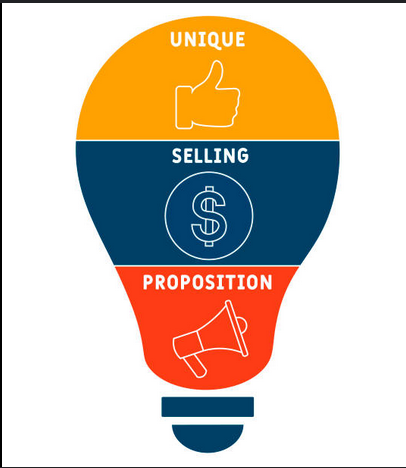By Felicia Nwosu
In a challenging economic environment marked by shrinking consumer purchasing power and shifting priorities, brands are strategically leveraging their unique selling propositions (USPs) to remain relevant and competitive. As inflation continues to strain household budgets, consumers are more discerning, seeking value and solutions that directly address their needs. This shift in consumer behavior is pushing brands to rethink their strategies, positioning their USPs as essential tools for navigating market complexities and meeting evolving consumer expectations.
A compelling USP is no longer just about standing out; it has become a strategic necessity for brands aiming to capture consumer attention and foster loyalty. In today’s competitive landscape, consumers are bombarded with choices, making it crucial for brands to differentiate themselves with clear and relatable value propositions. Companies that effectively communicate their USPs, whether through affordability, quality, convenience, or innovation are more likely to resonate with consumers and inspire brand loyalty.
Industry experts emphasize the importance of relevance in defining a USP. With economic pressures influencing buying decisions, consumers are looking for brands that offer practical solutions to their pain points. For instance, in Nigeria’s fast-moving consumer goods (FMCG) sector, brands are introducing smaller, more affordable product sizes to cater to budget-conscious consumers. This strategic approach not only meets current needs but also ensures top-of-mind awareness by aligning with the financial realities of target audiences.
To effectively leverage USPs, brands are adopting data-driven approaches to understand changing consumer behaviors. Advanced analytics and consumer insights are helping companies identify emerging needs and preferences, enabling them to tailor their USPs for maximum impact. This strategic alignment ensures that marketing messages resonate with consumers, reinforcing the brand’s relevance and value proposition.
Victor Femi-Fred, MD/CEO of Ventra Consult, during a radio program, emphasized the need for brands to adopt targeted strategies to dominate their market. According to him, to effectively reach end users in their specific areas of interest, brands must embrace a targeted marketing approach that allows them to identify consumer needs and deliver tailored solutions. This strategy, he noted, is key to achieving market dominance.
Femi-Fred also highlighted the fine line between a product’s USP and its unique value proposition (UVP), urging brands to exercise caution in their messaging. He explained, “When you say the USP, it is specific; it is a call to action. Here, it is the consumer that has the power to determine the terms and conditions for the product because that is a call to action.
“When you are talking about the unique value proposition, it is a combination of the benefits of what that product can do, and that is when questions around budget, plans, expectations, the need, desires, longevity, and many others come into play. It is a combination of a whole lot that goes into the unique value proposition while the unique selling point is the specific – just a call to action. The USP determines the niche because that speaks specifically to a need and who desires that need.”
This strategic differentiation is essential, especially in sectors where products directly engage with consumers. Femi-Fred’s insights underscore the importance of aligning marketing strategies with consumer expectations, ensuring that USPs resonate with the intended audience while maintaining brand credibility.
Eki Adzufeh, Chief Executive Officer and Administrator of Alphabet Media Academy Limited, emphasized that a brand’s USP is more than a positioning statement. According to Adzufeh, brands must learn to convert their unique features into benefits that create a recollective image in the minds of customers, fostering easy recognition and influencing purchase decisions.
He noted, “USP is more than a positioning statement. A positioning statement says a lot about a brand. When it comes to USP, then there are some intrinsic values that set the brand apart, which may not be tangible sometimes. Unique Selling Proposition is what defines a brand’s heritage and essence. It helps as a catalyst in fostering consumers’ purchasing decision to go beyond trial purchase but also repeat purchase which raises profitability and increases bottom line as well.”
Adzufeh argued that for a brand’s USP to remain effective, it must be consistent in meeting consumers’ needs; otherwise, brand switching becomes inevitable. He warned that dissatisfied consumers could negatively impact a brand’s reputation through unfavorable word of mouth. He advised brands to thoroughly understand their target audience by clearly defining and highlighting the unique properties of their products, while also promoting their USPs effectively for maximum consumer recall and engagement.
In the tech and digital space, companies are leveraging their USPs to provide enhanced customer experiences. Personalized services, seamless digital interactions, and innovative features are setting brands apart in a crowded market. By emphasizing convenience and user-centric designs, these brands are addressing consumer demands for efficiency and accessibility. This strategic use of USPs is fostering brand loyalty, even amidst economic challenges.
Financial services providers are also redefining their USPs to meet evolving consumer needs. Digital banking solutions and flexible payment options are being highlighted as key differentiators, offering convenience and financial control to consumers navigating uncertain economic times. By strategically aligning their USPs with customer pain points, financial institutions are not only driving adoption but also building trust and credibility.
Other marketing experts also averred that the role of emotional connections in USP positioning cannot be overlooked. They affirmed that,in an era where consumers are looking for authenticity and purpose, brands that align their USPs with meaningful narratives are winning hearts and minds. By crafting relatable stories that reflect consumer challenges, companies are building emotional bonds that translate to brand loyalty and advocacy.
This strategic narrative-building is evident in the health and wellness industry, where brands are emphasizing product benefits that resonate with consumers’ desire for healthier lifestyles. In the beauty and personal care sector, multifunctional products that offer value for money are being positioned as USPs to meet the needs of cost-conscious consumers seeking effective solutions.
Other business leaders explained that, in an economy where spending is cautious, brands must strike a delicate balance between differentiation and cost efficiency. They noted that, this is where strategic innovation plays a crucial role. Companies are reimagining product features, packaging, and delivery methods to reinforce their USPs while maintaining profitability. This cautious innovation is helping brands stay competitive without compromising on value or quality







Comment
No comments found.